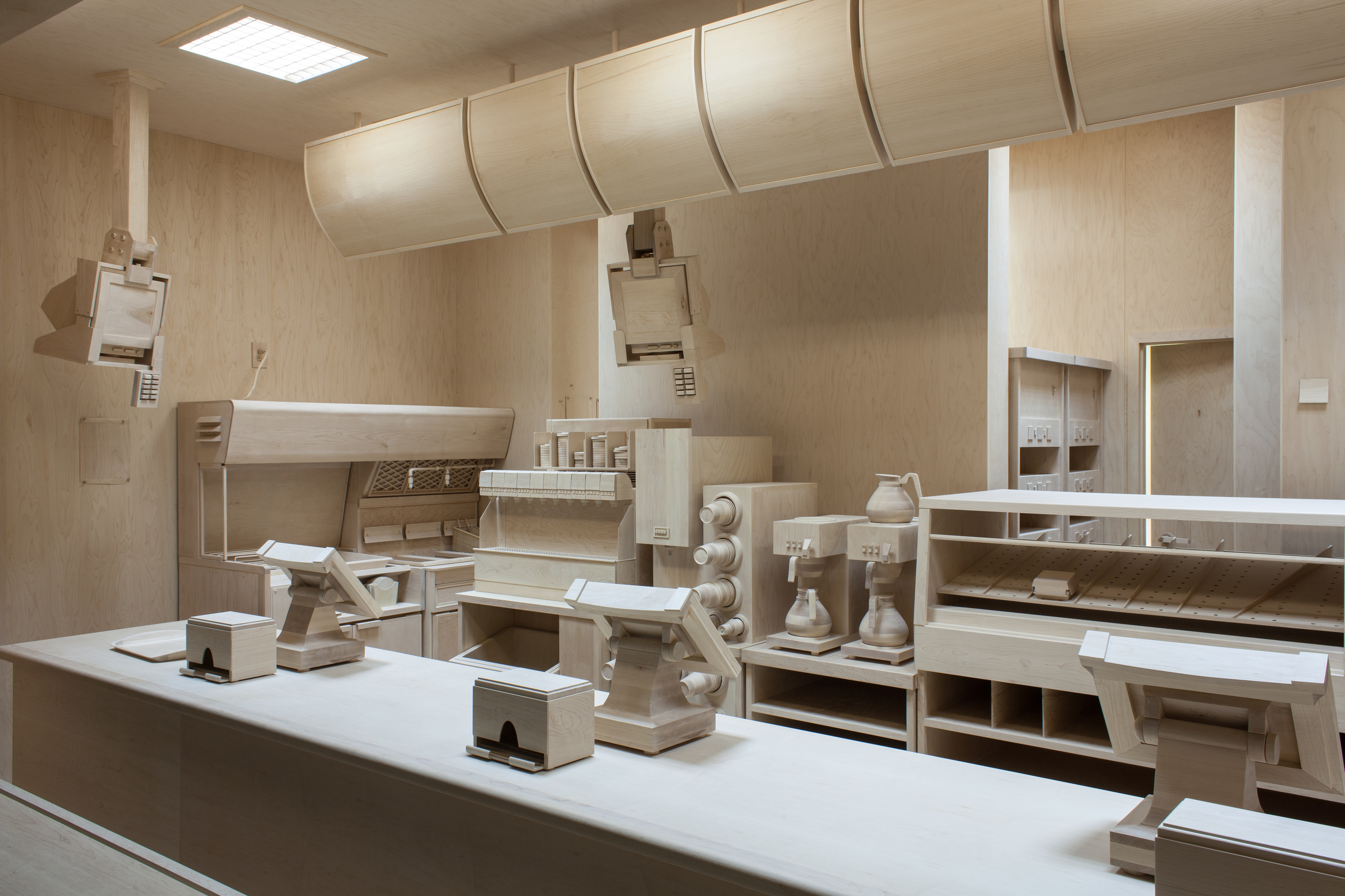ArtReview
by Brienne Walsh
Roxy Paine: Apparatus
If you were asked to create a diorama that represents the social, political and economic conditions of twenty-first-century America, what would you put in it? A white kid looking at an iPad while his Filipina nanny makes his bed? A group of meth heads in the cereal aisle of a Walmart? There is so much to cover, and so few ways to do so without being either superficial or offensive. In Apparatus, Roxy Paine does the task justice. Through two full-scale wooden dioramas of a control room (a composite of different kinds: air-traffic control, power plant, recording studio) and the interior of a fast-food restaurant, Paine evokes so much of what drives American society today – control, complacency, greed, excess, ignorance. He does so by replicating the sterile facades of the messy (and some would say evil) web of systems that enable our comfortable lives. In presenting them here devoid of the human presence that would activate them, and meticulously hand-carved out of birch and maple, Paine asks us to contemplate their true nature. But rather than being imbued with a sense of wabi-sabi, a Japanese concept having to do with finding enlightenment in the imperfect, which the press release claims is central to Paine’s practice, I ended up feeling powerless in the face of the powerful apparatus that Americans service, to the detriment of their own health and happiness.
With the breathtaking Control Room (all works 2013), what will come to mind first – at least for a science-fiction nerd – is the bridge from Battlestar Galactica’s eponymous spaceship. Enclosed behind a window of glass, the installation is composed of hundreds of wooden pieces, painted in mute tones of taupe and grey and resembling gas gauges, television screens, levers, telephones, switches. Behind every system that we have come to rely on (a steady water supply, waste management, the servers that store our emails), along with those that we passively accept because we think that they keep us safe (drone technology, NSA spying programmes) stands such an anonymous space – an apparatus that, to skilled and unskilled worker alike, appears as inoperable as the merely symbolic shells Paine reproduces.
The fastfood counter of Carcass consists of wood so carefully carved that, for example, even the straws in its straw dispensers look like precious objects. The systems embodied are different than the ones in Control Room. Here we confront the subsidised farmers and corporations that engineer our food, and who are connected to the advertising firms that rely on poverty and poor education to sell their products, and to the healthcare system that makes money off the damage done to our bodies. In essence, it’s a system that fucks us. But fast food easily stands in as well for fast fashion, ever-upgraded smartphones, McMansions – all ultimately intended-to-be-obsolete products that embody America’s voracious appetite for instant gratification.
There’s a brilliance to how much can be addressed by two wooden dioramas. But there’s also something missing. What Paine fails to address is the system that the artworks enter by their very presence in an art gallery. The monied one that drives the top of the food chain, and which benefits the most from a smoothly running and little-questioned apparatus.
December 2013
